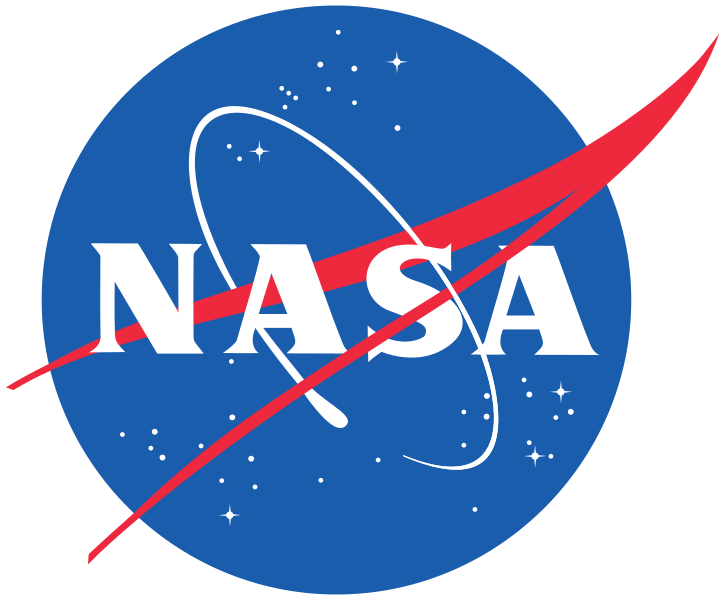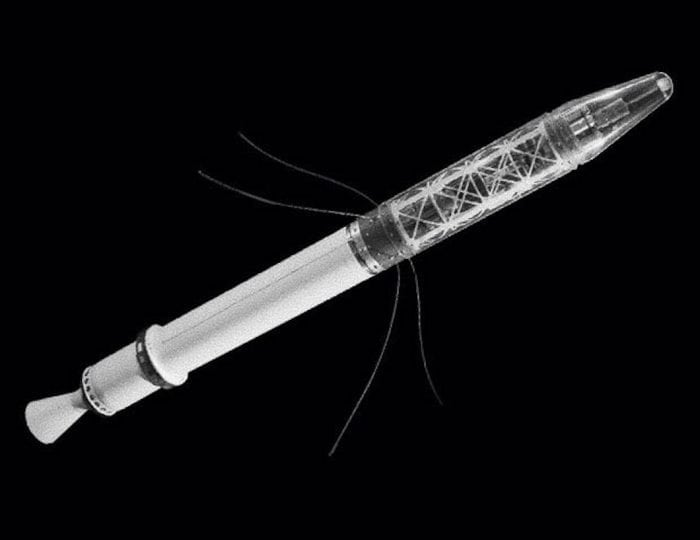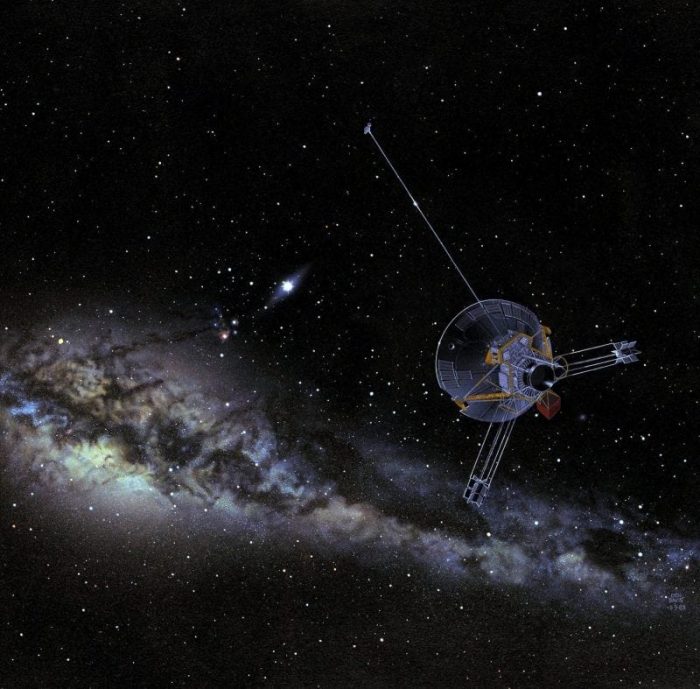
July 30, 2018, marked NASA’s 60th anniversary when Congress passed the Nautical Aeronautics and Space Act on July 16. On July 29, 1958, President Dwight D. Eisenhower signed it into law, and NASA officially opened up on October 1, 1958. When NASA was founded, it was important to make it a civilian entity, as opposed to a military entity, to show people a more peaceful and caring space program.
Now, NASA is actually a predecessor to NACA, the National Advisory Committee for Aeronautics which was a United States federal agency that was around since 1915. In 1958, when NASA was “born”, NACA was dissolved and the workers and research were transferred to NASA. Today NASA has released a 5 minute YouTube video (which can be found here) documenting their extensive history in space flight and aeronautics. As a tribute to NASA and their history, we wanted to honor them in the best way we know how: to look back at their history.

NASA’s 60th-anniversary logo. Image source: NASA
In NASA’s 60 years they have made incredible strides in space exploration and technology, and to this day are still making those strides. Every day, NASA works at new discoveries, finding new things in our universe, and is always planning “our” next step; Mars. While humanity looks to the future of space exploration, we wanted to take a look back at NASA’s greatest accomplishments from these past 60 years. Of course, this list is totally subjective, but if you think we left something off this list feel free to write them down below in the comments!
The Greatest NASA Accomplishments Over The Past 60 Years
| NASA’s Greatest Accomplishments | |
| Mission | Year |
| Explorer 1 | 1958 |
| Pioneer 10 | 1972 |
| Apollo Program | 1960 – 1972 |
| Gemini 3 | 1965 |
| Voyager | 1977 |
| Spirit and Opportunity | 2004 |
| Cassini | 1997 |
| Viking | 1976 |
| Hubble | 1990 |
The accomplishments on this list are here because of significance, they either made huge impacts on society or they taught us something extremely important. This list is in order by launch date or program dates.
Explorer 1 – 1958

A cutaway model of Explorer 1. Image source: JPL / NASA
Explorer 1 was the very first satellite launched by the United States on January 31, 1958, out of Cape Canaveral Missile Annex, Florida. This satellite was launched in response to the Soviet Union’s satellites Sputnik 1 and 2, and the launch of Explorer 1 is really what sparked the Cold War Space Race between the United States and the Soviet Union.
Explorer 1 is important to American history not just because it was our first satellite, but because it was the first satellite to discover the Van Allen radiation belt, which is a zone of electrically charged particles that are created by solar winds that surround a planet. After 4 months, Explorer 1’s batteries died and the satellite stayed in orbit until 1970. It was proceeded by over 90 different Explorer spacecraft.
Apollo Program – 1961 to 1972
In my personal opinion, the Apollo program, most notably Apollo 11, was probably NASA’s greatest accomplishment (and possibly humanity’s greatest accomplishment) thus far. The Apollo program was the program responsible for landing humans on the Moon from 1969 to 1972. This was actually the goal of President John F. Kennedy, so Apollo was dedicated to him after his assassination in 1963 since he never got to see his dream of Americans land on the Moon.
The first flight of the Apollo program was on February 26, 1966, and the last flight was Apollo 17, launched on December 7, 1972. Overall the Apollo program had 16 successes and 2 failures; Apollo 1 and Apollo 13. Apollo 6 is considered a partial failure. Apollo 1 was the first manned mission of the Apollo program, however, a cabin fire broke out before launch during a test rehearsal and all 3 crew members were killed. Apollo 13 (you may have seen the movie made after the mission) was the 7th manned Apollo mission, and landing on the Moon was aborted due to multiple failures. Luckily, the crew was able to land back on Earth safely. Apollo 6 was an unmanned test of the Saturn V test vehicle that had experienced pogo oscillation, which was a well-known problem caused by unsteady engine combustion.
Gemini 3 – 1965
Gemini 3 was the first manned mission of the Gemini program. The Gemini program was actually the second manned American space program (the first American manned space program was Project Mercury in 1959). Gemini 3 was flown by astronauts Gus Grissom and John Young on March 23, 1965. Astronaut Gus Grissom was actually supposed to fly on Apollo 1, however, he was one of the 3 astronauts killed in Apollo 1 cabin fire.
This was actually the last manned flight controlled out of Cape Canaveral, Florida. After this flight, NASA moved their control center to the newly opened Manned Spacecraft Center down in Houston, Texas.
Pioneer 10 – 1972

Artist’s rendering of Pioneer flying through space. Image source: JPL / NASA
Pioneer 10 was a space probe launched on March 2, 1972. Its primary mission was to complete a flyby of Jupiter, which it completed in 1973. After that, Pioneer became one of the first manmade objects that left our solar system. In 2003, NASA lost communication with Pioneer 10 because the probe lost power to its radio transmitter.
Pioneer 10 is currently 10 billion miles away from Earth but is not the farthest manmade object in space (that accolade belongs to Voyager). If Pioneer continues on its trajectory undisturbed, in 2 million years it will arrive at the star Aldebaran, which is 68 light years away.
Viking Program – 1976
The Viking program was a pair of space probes, Viking 1 & 2, sent to Mars in 1976. Essentially the probes had two parts; an orbiter that circled the planet, and a lander that was meant to land on the planet to study the surface. Viking actually stemmed from Voyager (which we will go over next).
Viking 1 was launched on August 20, 1975, and Viking 2 was launched on September 9, 1975. Both orbiters and landers were successful.
Voyager – 1977
Voyager is my personal favorite NASA accomplishment (besides the Curiosity rover). The Voyager program encompassed 2 space probes, Voyager 1 & 2, to take advantage of the alignment of the outer planets; Jupiter, Saturn, Uranus, and Neptune. Voyager 1 was the first manmade object to enter interstellar space on August 25, 2012, and Voyager 2 is not too far behind.
These probes gave us our first up-close images of the outer planets and sparked many other probes to investigate the gas giants (such as Cassini). Voyager also has the Golden Record, which has music and human greetings on it in case any alien lifeforms ever come across it. Essentially, Voyager will float through space long after humanity ceases to exist and will be our stamp that we existed to the universe.
Hubble – 1990
Most of you have seen the picture the Hubble gives us, which is why this piece of technology is so important to us. The Hubble Space Telescope (HST for short) was launched in 1990 and is still operating to this day has given humanity amazing, and exceptionally important, pictures of the universe and space around us. Scientists have seen pictures of galaxies and planets forming, and the HST has even given us hints and clues about how our own galaxy and universe formed.
Hubble is expected to last until 230 or 2040 and will be replaced by the James Webb Telescope, which is slated to be launched in 2021.
Cassini – 1997
Cassini-Huygens, more commonly known as Cassini, was a collaboration between NASA, the European Space Agency (ESA), and the Italian Space Agency (ISA), to send a probe to study Saturn, all of its moons, and the famous rings. Launched in 1997, Cassini was the first probe to enter Saturn’s orbit, and the 4th space probe to study Saturn. Cassini studied Saturn for 13 years, and in 2017, Cassini entered Saturn’s atmosphere and burned up.
Spirit and Opportunity – 2003
Finally, on the list, we have the Mars rovers Spirit and Opportunity. We have written about these twin rovers pretty extensively (which you can find here and here), so I will just go over the basics. These rovers were launched in 2003 to explore Mars and categorize Martian rocks and soil. Both rovers had their missions extended because they both lived past their “expiration dates”. Unfortunately, Martian life took its toll on Spirit and in 2010 NASA lost contact with the rover.
The rover Opportunity has lived on until recently with a planet-wide dust storm. It is unknown whether the rover will come back online or not. Regardless, both rovers have given NASA insight into Mars, the conditions faced, and even how to build the future robots for expeditions.









